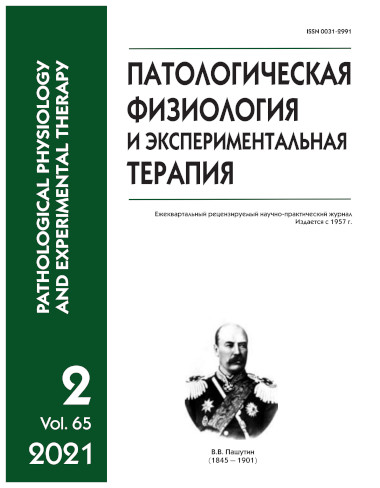Hypercapnia and its combination with hypoxia decrease the permeability of the blood-brain barrier in rats
Abstract
The aim of study was to evaluate the blood-brain barrier (BBB) permeability after a combined treatment with hypercapnia and hypoxia. Methods. Experiments were performed on 40 Wistar male rats randomized to 4 equal groups (n=10): normobaric hypoxia (PO2 = 90 mm Hg/13%/PCO2 = 1 mm Hg/0.1%), permissive hypercapnia (PO2 = 150 mm Hg/21%; PCO2 = 50 mm Hg/7%); hypercapnic hypoxia (PO2 = 90 mm Hg/13%, PCO2 = 50 mm Hg/7%); and a control group (PO2 – 150 mm Hg/21%; PCO2 – 1 mm Hg/0.1%) in a special chamber for 15 days, 30 min daily. The gas mixture was delivered to the chamber with a compressor at 15 l/min. Gas composition was monitored with a gas analyzer (Microlux, Russia). At 24 hrs after completion of respiratory exposures, Evans blue dye was administered i.p. (4 ml/kg body weight). BBB permeability was assessed from the content of Evans blue dye in blood plasma photometrically and in brain tissue by fluorescent microscopy. Evans blue fluorescence intensity in brain tissue was analyzed with a confocal microscope FV10i-W (Olympus, Japan). Fluorescent integrative optical density of Evans blue was determined and used for calculation of the permeability index from blood concentration of the dye. Blood concentration of the dye was measured photometrically (at 610 nm) with a plate photometer Multiscan FS (Thermo Scientific, USA) using calibration curves. Results. The BBB permeability index (content of Evans blue dye in the brain / concentration of Evans blue dye in blood) was significantly lower in the groups that underwent respiratory exposures with the presence of a hypercapnic component. Conclusion. Intermittent hypercapnic hypoxia yields the lowest BBB permeability compared to the isolated effect of either hypoxia or hypercapnia.






